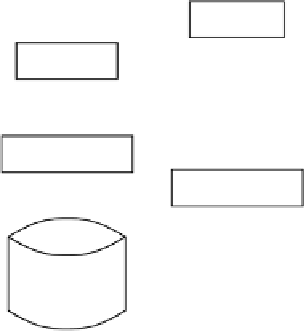Information Technology Reference
In-Depth Information
results in Section 5 will show that a KHT-based solution is particularly suited
for this scenario. Fig. 3 shows how to architect a solution to AGCD using a
KHT:
BACK END
EXTERNAL
DMZ
Key Manager
(LKH)
Registration
Front End
Agregate
Key Updates
client
Key Cache
(KHT)
Internet
Content Delivery
Front End
client
Content Delivery
Back End
client
Annotated+
Encrypted
Content
Repository
Raw
Content
Repository
Fig. 3.
Overview of AGCD with KHT
-
Clients register with a Registration Front End (RFE) and, after mutual
authentication and subscription payment, they join the secure group by ob-
taining a set of keys in the LKH tree.
-
The KM is contacted to modify the key tree and to generate key updates.
Similarly, when a client does not renew his subscription, the KM evicts him
and generates appropriate key updates. However, for eciency reasons we
only flush pending key changes at regular intervals (similar to [12]).
-
Key updates are filtered by a KHT-CM that calculates the minimal update
information required by all currently paying members to recover the new key
(an estimation of the KHT-WS, as described in Section 3).
-
In parallel, the Content Delivery Back End (CDBE) uses the current group
key to encrypt and authenticate the content (or a key encrypting the content)
that will be provided to subscribers, and adds to it the estimated KHT-WS.
Later on, the Content Delivery Front End (CDFE), e.g., a web server, just
forwards this content to whoever requests it. Avoiding the authentication of
clients ensures ecient caching and anonymicity.
-
Clients download the annotated encrypted content from the CDFE and try
to decrypt and authenticate it using their current knowledge of the group
key, or the keys that they can derive from the annotations. If successful they
will update their local state with the new keys. Otherwise, they will have to
authenticate again with the RFE and obtain the new keys. Clearly, this last
situation shows a failure of our heuristics, that we evaluate in Section 5.












